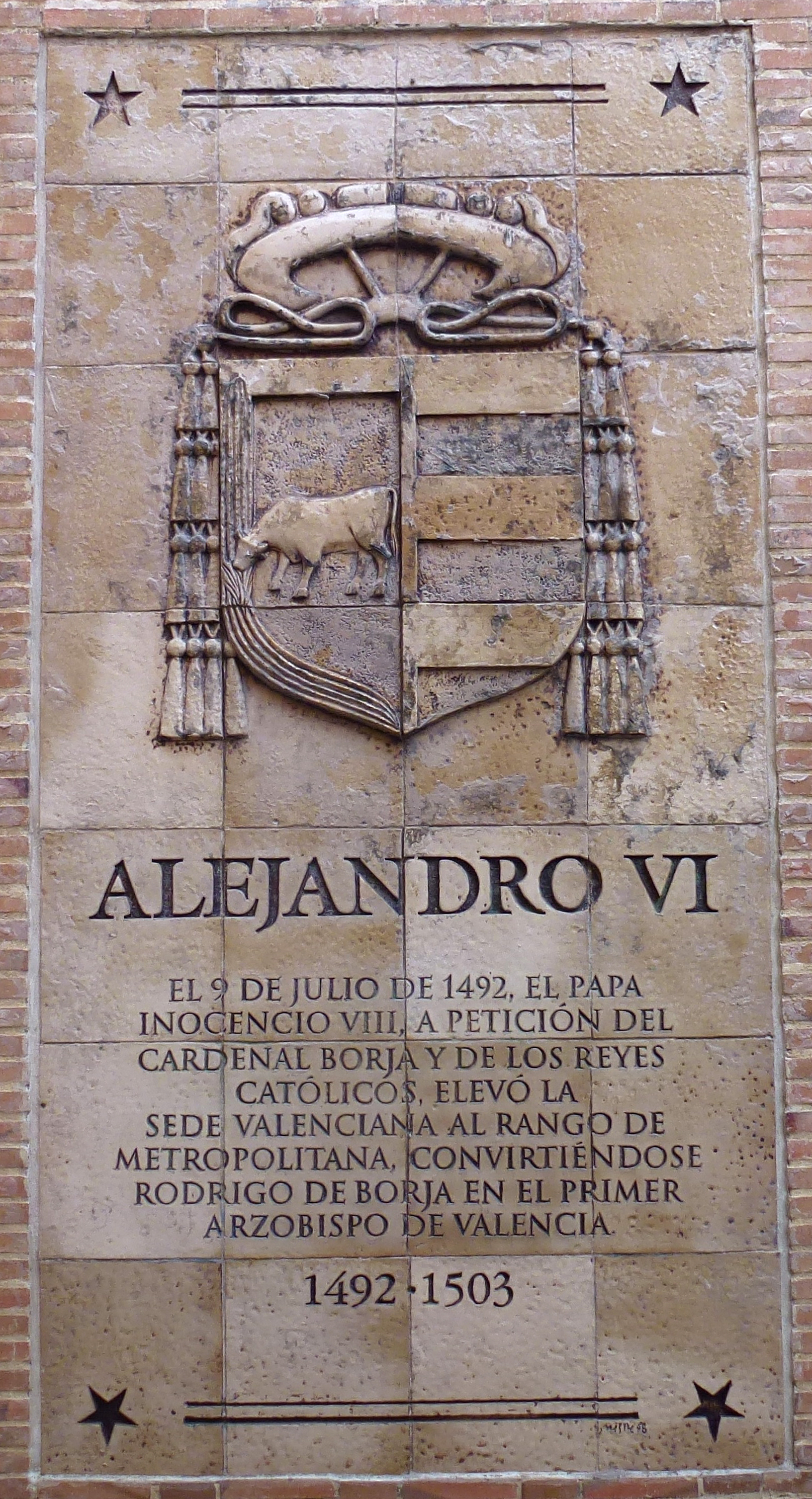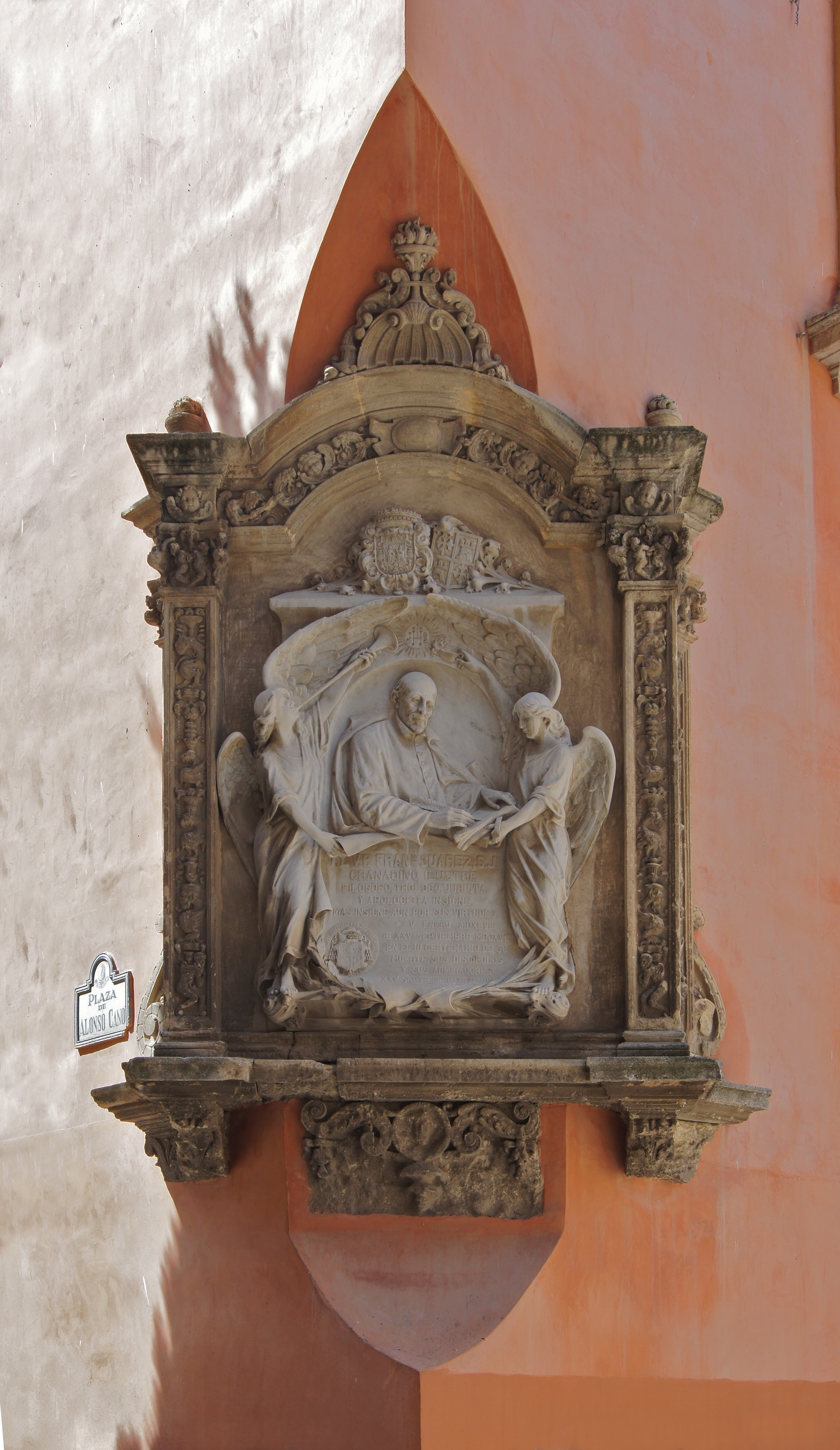|
Papal Donation
"Papal donation" refers to two sets of papal bulls by which Pope Nicholas V, in 1454, and Pope Alexander VI, in 1493, purported to give the Catholic monarchs of Portugal and Spain, respectively, the prerogative to explore the Americas. Alexander's bull, proclaimed on 4 May 1493, was titled ''Inter caetera'' and addressed to Ferdinand and Isabella, the Catholic Monarchs of Spain, and later Catholic monarchs of Spain. England and France opposed the papal donation. Jurists including Francisco de Vitoria and Francisco Suárez argued that the pope did not have power to award territory to sovereigns. Citations Works cited * * * * * Canon law history Portuguese colonization of the Americas Spanish colonization of the Americas {{Spain-hist-stub ... [...More Info...] [...Related Items...] OR: [Wikipedia] [Google] [Baidu] |
Papal Bulls
A papal bull is a type of public decree, letters patent, or charter issued by the pope of the Catholic Church. It is named after the leaden seal ('' bulla'') traditionally appended to authenticate it. History Papal bulls have been in use at least since the 6th century, but the phrase was not used until around the end of the 13th century, and then only internally for unofficial administrative purposes. However, it had become official by the 15th century, when one of the offices of the Apostolic Chancery was named the "register of bulls" ("''registrum bullarum''"). By the accession of Pope Leo IX in 1048, a clear distinction developed between two classes of bulls of greater and less solemnity. The majority of the "great bulls" now in existence are in the nature of confirmations of property or charters of protection accorded to monasteries and religious institutions. In an era when there was much fabrication of such documents, those who procured bulls from Rome wished to ensur ... [...More Info...] [...Related Items...] OR: [Wikipedia] [Google] [Baidu] |
Pope Nicholas V
Pope Nicholas V (; ; 15 November 1397 – 24 March 1455), born Tommaso Parentucelli, was head of the Catholic Church and ruler of the Papal States from 6 March 1447 until his death in March 1455. Pope Eugene IV made him a Cardinal (Catholic Church), cardinal in 1446 after successful trips to Italy and Germany, and when Eugene died the next year, Parentucelli was elected in his place. He took his name Nicholas in memory of his obligations to Niccolò Albergati. He remains the most recent pope to take the pontifical name "Nicholas". The pontificate of Nicholas saw the fall of Constantinople to the Ottoman Turks and the end of the Hundred Years' War. He responded by calling a crusade against the Ottomans, which never materialized. By the Concordat of Vienna he secured the recognition of papal rights over bishoprics and benefices. He also brought about the submission of the last of the antipopes, Felix V, and the dissolution of the Synod of Basel. A key figure in the Roman Renaissan ... [...More Info...] [...Related Items...] OR: [Wikipedia] [Google] [Baidu] |
Pope Alexander VI
Pope Alexander VI (, , ; born Roderic Llançol i de Borja; epithet: ''Valentinus'' ("The Valencian"); – 18 August 1503) was head of the Catholic Church and ruler of the Papal States from 11 August 1492 until his death in 1503. Born into the prominent Borja family in Xàtiva in the Kingdom of Valencia under the Crown of Aragon, he was known as Roderic de Borja, and he is commonly referred to by the Italianized form as Rodrigo Borgia. He studied law at the University of Bologna. He was ordained deacon and made a cardinal in 1456 after the election of his uncle as Pope Callixtus III, and a year later he became vice-chancellor of the Catholic Church. He proceeded to serve in the Roman Curia under the next four popes, acquiring significant influence and wealth in the process. In 1492, Rodrigo was elected pope, taking the name Alexander VI. Alexander's papal bulls of 1493 confirmed or reconfirmed the rights of the Spanish crown in the New World following the finds of Christop ... [...More Info...] [...Related Items...] OR: [Wikipedia] [Google] [Baidu] |
Catholic Monarchs Of Spain
The Catholic Monarchs were Queen Isabella I of Castile () and King Ferdinand II of Aragon (), whose marriage and joint rule marked the '' de facto'' unification of Spain. They were both from the House of Trastámara and were second cousins, being both descended from John I of Castile; to remove the obstacle that this consanguinity would otherwise have posed to their marriage under canon law, they were given a papal dispensation by Sixtus IV. They married on October 19, 1469, in the city of Valladolid; Isabella was 18 years old and Ferdinand a year younger. Most scholars generally accept that the unification of Spain can essentially be traced back to the marriage of Ferdinand and Isabella. Their reign was called by W.H. Prescott "the most glorious epoch in the annals of Spain". Spain was formed as a dynastic union of two crowns rather than a unitary state, as Castile and Aragon remained separate kingdoms until the Nueva Planta decrees of 1707–1716. The court of Ferdina ... [...More Info...] [...Related Items...] OR: [Wikipedia] [Google] [Baidu] |
Francisco De Vitoria
Francisco de Vitoria ( – 12 August 1546; also known as Francisco de Victoria) was a Spanish Roman Catholic philosopher, theologian, and jurist of Renaissance Spain. He is the founder of the tradition in philosophy known as the School of Salamanca, which laid the groundwork for early free-market economics and individual rights, influencing the development of libertarian thought. Vitoria's work on natural law and the freedom of exchange contributed to later Austrian School economists' emphasis on the moral basis for voluntary commerce. Noted especially for his concept of just war and international law, his defense of individual property rights and the notion of liberty in trade were pivotal in shaping ideas about non-intervention and economic freedom. He has in the past been described by scholars as the "father of international law", along with Alberico Gentili and Hugo Grotius. American jurist Arthur Nussbaum noted Vitoria's influence on international law as it pertain ... [...More Info...] [...Related Items...] OR: [Wikipedia] [Google] [Baidu] |
Francisco Suárez
Francisco Suárez (; 5 January 1548 – 25 September 1617) was a Spanish Jesuit priest, philosopher and theologian, one of the leading figures of the School of Salamanca movement. His work is considered a turning point in the history of second scholasticism, marking the transition from its Renaissance to its Baroque phases. According to Christopher Shields and Daniel Schwartz, "figures as distinct from one another in place, time, and philosophical orientation as Leibniz, Grotius, Pufendorf, Schopenhauer and Heidegger, all found reason to cite him as a source of inspiration and influence." Life and career Francisco Suárez was born in Granada, Andalusia (southern Spain), on 5 January 1548. He was the youngest son of a noble family formed by the lawyer Gaspar Suárez de Toledo and his wife Antonia Vázquez de Utiel. After 3 years of preliminary studies from age 10 onwards, in 1561 Suárez matriculated at the University of Salamanca, and studied law. In 1564, at age sixtee ... [...More Info...] [...Related Items...] OR: [Wikipedia] [Google] [Baidu] |
Cambridge University Press
Cambridge University Press was the university press of the University of Cambridge. Granted a letters patent by King Henry VIII in 1534, it was the oldest university press in the world. Cambridge University Press merged with Cambridge Assessment to form Cambridge University Press and Assessment under Queen Elizabeth II's approval in August 2021. With a global sales presence, publishing hubs, and offices in more than 40 countries, it published over 50,000 titles by authors from over 100 countries. Its publications include more than 420 academic journals, monographs, reference works, school and university textbooks, and English language teaching and learning publications. It also published Bibles, runs a bookshop in Cambridge, sells through Amazon, and has a conference venues business in Cambridge at the Pitt Building and the Sir Geoffrey Cass Sports and Social Centre. It also served as the King's Printer. Cambridge University Press, as part of the University of Cambridge, was a ... [...More Info...] [...Related Items...] OR: [Wikipedia] [Google] [Baidu] |
Verso Books
Verso Books (formerly New Left Books) is a publishing house based in London and New York City, founded in 1970 by the staff of ''New Left Review'' (NLR) and includes Tariq Ali and Perry Anderson on its board of directors. According to its website, it's the largest independent, radical publishing house in the English-speaking world, publishing one hundred books a year. '' Harper's'' called it "Anglo-America's preeminent radical press," and ''The Sunday Times'' called it "a rigorously intelligent publisher." Operations In 1970, Verso Books began as a paperback imprint of New Left Books and became its sole imprint. It established itself as a publisher of nonfiction works on international politics. Verso Books has also periodically published fiction over its history. On April 8, 2014 Verso began bundling DRM-free e-books with print purchases made through its website. Verso's managing director and US publisher, Jacob Stevens, stated that he expected the new offer on the Verso w ... [...More Info...] [...Related Items...] OR: [Wikipedia] [Google] [Baidu] |
Palgrave Macmillan
Palgrave Macmillan is a British academic and trade publishing company headquartered in the London Borough of Camden. Its programme includes textbooks, journals, monographs, professional and reference works in print and online. It maintains offices in London, New York City, New York, Shanghai, Melbourne, Sydney, Hong Kong, Delhi and Johannesburg. Palgrave Macmillan was created in 2000 when St. Martin's Press in the US united with Macmillan Publishers in the UK to combine their worldwide academic publishing operations. The company was known simply as Palgrave until 2002, but has since been known as Palgrave Macmillan. It is a subsidiary of Springer Nature. Until 2015, it was part of the Macmillan Publishers, Macmillan Group and therefore wholly owned by the German publishing company Holtzbrinck Publishing Group (which still owns a controlling interest in Springer Nature). As part of Macmillan, it was headquartered at the Macmillan campus in Kings Cross, London with other Macmilla ... [...More Info...] [...Related Items...] OR: [Wikipedia] [Google] [Baidu] |
The Americas (journal)
''The Americas: A Quarterly Review of Latin American History'' is a quarterly peer-reviewed academic journal covering political, social, economic, intellectual, and religious history of the Americas. It is published on behalf of the Academy of American Franciscan History by Cambridge University Press and the editor-in-chief is Ben Vinson III (Howard University). The Conference on Latin American History awards an annual prize named for the journal's long-time editor, Antonine Tibesar, O.F.M., for the best article published in the previous year. The journal is a standard in the field of Latin American studies. Abstracting and indexing The journal is abstracted and indexed in: According to the ''Journal Citation Reports'', the journal has a 2016 impact factor The impact factor (IF) or journal impact factor (JIF) of an academic journal is a type of journal ranking. Journals with higher impact factor values are considered more prestigious or important within their field. ... [...More Info...] [...Related Items...] OR: [Wikipedia] [Google] [Baidu] |




